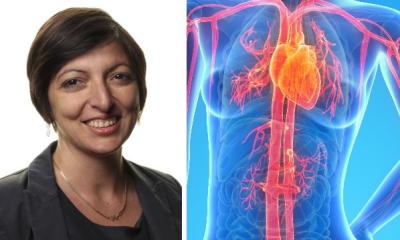Cold winter months increase risk of hypertension
The colder the weather, the greater the increase in blood pressure in the elderly population - to this conclusion comes a French study from Bordeaux, Dijon and Montpellier. The authors recommend to improve the blood pressure management in the elderly when outdoor temperature is very low by close monitoring of blood pressure and antihypertensive medication.
The study published in the January issue of Archives of Internal Medicine monitored 8801 participants over the age of 65 and found that systolic and diastolic blood pressure values differed significantly across the four seasons of the year and according to the distribution of outdoor temperature.
The higher the temperature, the greater the decrease in blood pressure. Systolic blood pressure, for example, decreased with increasing temperature, with an 8.0 mmHg decrease between the lowest (<7.9°C) and the highest (21.2°C) temperatures. Average systolic blood pressure was 5 mmHg higher in winter than in summer. High blood pressure, defined as a systolic blood pressure of 160 mmHg or higher, or a diastolic blood pressure of 95 mmHg or higher, was detected in 33.4 per cent of participants during winter and 23.8 percent during summer. These changes in blood pressure were greater in subjects 80 years or older than in younger participants.
Speaking on behalf of the European Society of Cardiology (ESC), Professor Frank Ruschitzka from the University Hospital, Zurich, says that the study reaffirms the place of the elderly as a target group for blood pressure monitoring. “The elderly, especially the increasing number of octogenarians, should not be neglected. They need extra care, and will benefit from monitoring and appropriate treatment. This study emphasises the need for year-round vigilance.”
One possible explanation for the study findings, adds Professor Ruschitzka, lies in the emerging link between vitamin D and blood pressure. The elderly, especially those in care homes, are subject to vitamin D deficiency, largely as a result of their limited exposure to sunlight, and vitamin D deficiency can predispose to hyptertension via activation of the renin-angiotensin-aldosterone system. “The benefit of sunlight on vitamin D levels in the elderly is under appreciated,” says Professor Ruschitzka. “Fifteen minutes exposure to sunlight can produce the equivalent of 2000 international units vitamin D.”
REFERENCES:
1. Alpérovitch A, Lacombe J-M, Hanon O, et al. Relationship Between Blood Pressure and Outdoor Temperature in a Large Sample of Elderly Individuals: The Three-City Study. Arch Intern Med 2009; 169: 75-80.
2. Wang TJ, Pencina MJ, Booth SL, et al. Vitamin D deficiency and risk of cardiovascular disease. Circulation 2008; 117: 503-511.
3. Forman JP, Curhan JC, Taylor EN. Plasma 25-hydroxyvitamin D levels and risk of incident hypertension among young women. Hypertension 2008; 52: 828-832.
Picture: Techniker Krankenkasse
10.01.2009











